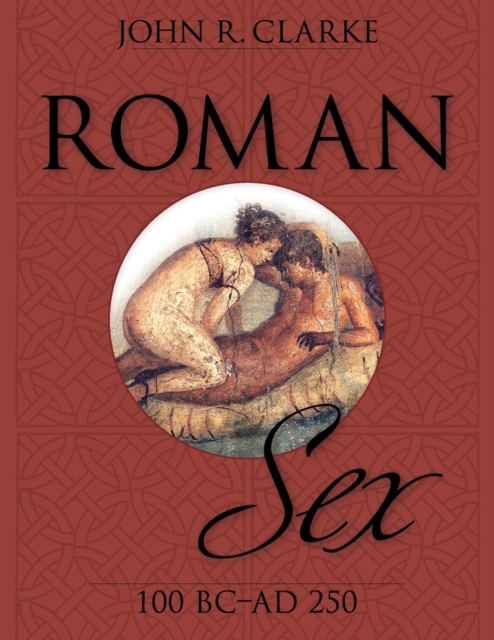Roman Sex: 100 B.C. to A.D. 250

Roman Sex: 100 B.C. to A.D. 250
Who could do what—to whom—and why? What were the rules of sexual engagement?
Why did the ancient Romans proudly display their erotic art in public?
When and why did Women's Liberation come to ancient Rome?
What were the rules of homosexual lovemaking?
What was the role of prostitution—both male and female?
Answering these questions and many more, Roman Sex provides a fresh and provocative account of ancient Roman sexual practices. Featuring 114 illustrations, including 95 full-color plates, Roman Sex explains for the first time a wealth of newly discovered sexual art including many paintings, sculptures, and vases hidden away in the world's "secret museums."
John R. Clarke, one of the world's foremost authorities on ancient Rome, puts these works of art back into their original context—whether in the home, brothel, or banquet table—and reveals ancient Roman attitudes on sex and sexuality.
The first Women's Liberation movement also took place in this period, and Clarke explains how and when it came about. He shows how and why the Roman man was a bisexual creature, alternating his affections between women and men, and how society treated the entrenched homosexual. Lesbian sex, illustrated by startling new discoveries at Pompeii, also gets full treatment.
Romans, both rich and poor, proudly displayed images in their homes that today we would hide away. Clarke takes the reader into a society markedly different from ours in its attitudes toward sex. With all its quirks, it was a sexually tolerant society that encouraged the creation and open display of erotic art. Roman Sex will appeal to any reader who wants to understand this culture, which was in many ways the forerunner of our own.
John R. Clarke is Annie Laurie Howard Regents Professor of the History of Art at the University of Texas at Austin, and a past president of the College Art Association. He is one of the world's foremost authorities on life in ancient Rome and author of The Houses of Roman Italy: Ritual, Space, and Decoration 100 B.C. to A.D. 250, as well as Looking at Lovemaking: Constructions of Sexuality in Roman Art 100 B.C. to A.D. 250.
PRP: 247.59 Lei
Acesta este Pretul Recomandat de Producator. Pretul de vanzare al produsului este afisat mai jos.
222.83Lei
222.83Lei
247.59 LeiLivrare in 2-4 saptamani
Descrierea produsului
Who could do what—to whom—and why? What were the rules of sexual engagement?
Why did the ancient Romans proudly display their erotic art in public?
When and why did Women's Liberation come to ancient Rome?
What were the rules of homosexual lovemaking?
What was the role of prostitution—both male and female?
Answering these questions and many more, Roman Sex provides a fresh and provocative account of ancient Roman sexual practices. Featuring 114 illustrations, including 95 full-color plates, Roman Sex explains for the first time a wealth of newly discovered sexual art including many paintings, sculptures, and vases hidden away in the world's "secret museums."
John R. Clarke, one of the world's foremost authorities on ancient Rome, puts these works of art back into their original context—whether in the home, brothel, or banquet table—and reveals ancient Roman attitudes on sex and sexuality.
The first Women's Liberation movement also took place in this period, and Clarke explains how and when it came about. He shows how and why the Roman man was a bisexual creature, alternating his affections between women and men, and how society treated the entrenched homosexual. Lesbian sex, illustrated by startling new discoveries at Pompeii, also gets full treatment.
Romans, both rich and poor, proudly displayed images in their homes that today we would hide away. Clarke takes the reader into a society markedly different from ours in its attitudes toward sex. With all its quirks, it was a sexually tolerant society that encouraged the creation and open display of erotic art. Roman Sex will appeal to any reader who wants to understand this culture, which was in many ways the forerunner of our own.
John R. Clarke is Annie Laurie Howard Regents Professor of the History of Art at the University of Texas at Austin, and a past president of the College Art Association. He is one of the world's foremost authorities on life in ancient Rome and author of The Houses of Roman Italy: Ritual, Space, and Decoration 100 B.C. to A.D. 250, as well as Looking at Lovemaking: Constructions of Sexuality in Roman Art 100 B.C. to A.D. 250.
Detaliile produsului









